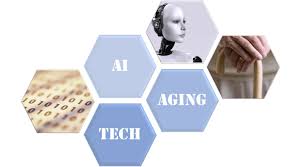Older adults can save tens of thousands of dollars annually by choosing assisted living communities over aging in place in their homes.
Unlike point solutions, Inspiren unifies resident safety, care planning, staffing, and emergency response into a single AI-powered platform.
An artificial intelligence-powered virtual assistant platform for senior living and care providers.

 For those few who still have landline phones, scammers make them ring. It has become a source of entertainment in our home to string
For those few who still have landline phones, scammers make them ring. It has become a source of entertainment in our home to string  What is care coordination and why is it so elusive? Catching my eye – a relatively new company, Sage, offers a ‘
What is care coordination and why is it so elusive? Catching my eye – a relatively new company, Sage, offers a ‘ The US population is aging and will be needing more care. You read it every day in the popular press – the bad news about the 65+ and their future care burden and the good news about the 65+ and their wealth (22% of US spending in 2022). Even with wealth, older adults at some point in their lives will need some level of assistance. While professional care providers will play a key role, increasingly their work will be augmented by software -- apps, machine learning and conversational AI. Why?
The US population is aging and will be needing more care. You read it every day in the popular press – the bad news about the 65+ and their future care burden and the good news about the 65+ and their wealth (22% of US spending in 2022). Even with wealth, older adults at some point in their lives will need some level of assistance. While professional care providers will play a key role, increasingly their work will be augmented by software -- apps, machine learning and conversational AI. Why? You know the statistics and they are alarming. Doctors and nurses are burning out,
You know the statistics and they are alarming. Doctors and nurses are burning out,  Setting the stage for The Future of Care Work research. Did you know that the number of
Setting the stage for The Future of Care Work research. Did you know that the number of